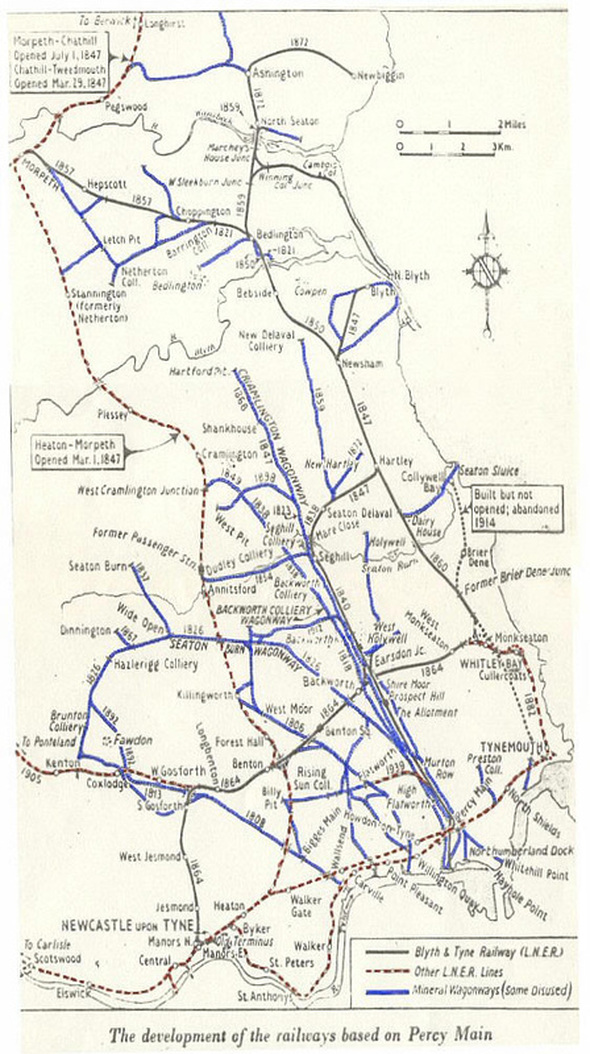Northumberland Wagonways

Plessey old Wagonway (1695)
___________________________
Killingworth Wagonway (1765)
_________________________
Backworth Wagonway (1818)
__________________________
Seatonburn Wagonway (1826)
___________________________
Cramlington Wagonway (1825)
___________________________
Burradon and Hollywell Wagonway (1951)
___________________________
Killingworth Wagonway (1765)
_________________________
Backworth Wagonway (1818)
__________________________
Seatonburn Wagonway (1826)
___________________________
Cramlington Wagonway (1825)
___________________________
Burradon and Hollywell Wagonway (1951)
The Wagonways
As the demand for coal grew a solution was needed to solve the transport dilemma. The solution was the early wagonways, where a horse pulled a wagon on wooden tracks. The early wagons (chaldrons) were measured in bolls:
1 boll = 2.35cwt which is about 300 kilos
(20cwt = 1 ton)
On level ground one horse could pull 10.5 tons of coal for 24 miles. The wagonways terminated at coal staiths.
In 1818 a line was built from Backworth A Pit to Howdon Pans and on 10th September of that year the first coal shipment from the Tyne of Backworth coal was made.
By 1821 horses had been superseded by steam on the Allotment to Percy Main sector. In 1823 the wagonway was extended to Cramlington with new Staiths at Percy Main catering for the extra coal supplements.
The development of the wagonways and improvements in the way coal was handled at the staiths caused a threat to the livelihood of the keelmen. Violent strikes occurred in 1809, 1819 and 1822.
After the building of public steam railways, part of the wagonways disappeared or connected to the nearest point on the new railways.
As the demand for coal grew a solution was needed to solve the transport dilemma. The solution was the early wagonways, where a horse pulled a wagon on wooden tracks. The early wagons (chaldrons) were measured in bolls:
1 boll = 2.35cwt which is about 300 kilos
(20cwt = 1 ton)
On level ground one horse could pull 10.5 tons of coal for 24 miles. The wagonways terminated at coal staiths.
In 1818 a line was built from Backworth A Pit to Howdon Pans and on 10th September of that year the first coal shipment from the Tyne of Backworth coal was made.
By 1821 horses had been superseded by steam on the Allotment to Percy Main sector. In 1823 the wagonway was extended to Cramlington with new Staiths at Percy Main catering for the extra coal supplements.
The development of the wagonways and improvements in the way coal was handled at the staiths caused a threat to the livelihood of the keelmen. Violent strikes occurred in 1809, 1819 and 1822.
After the building of public steam railways, part of the wagonways disappeared or connected to the nearest point on the new railways.
